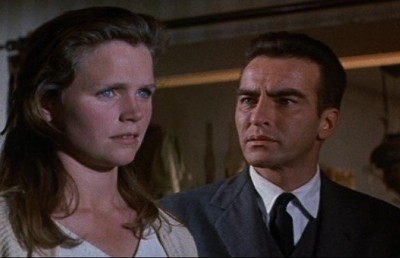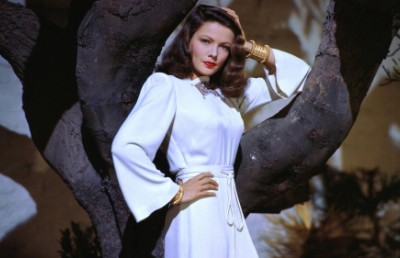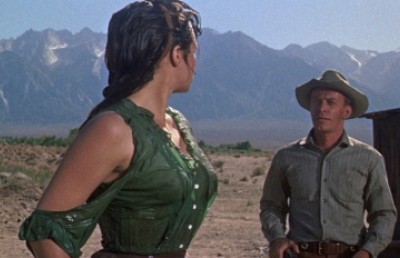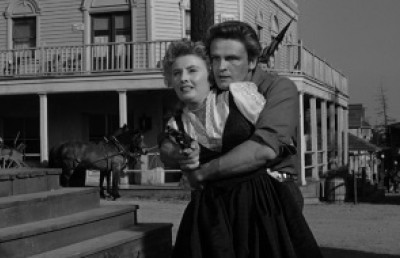Killer Queens: The Terrifying World of Disney
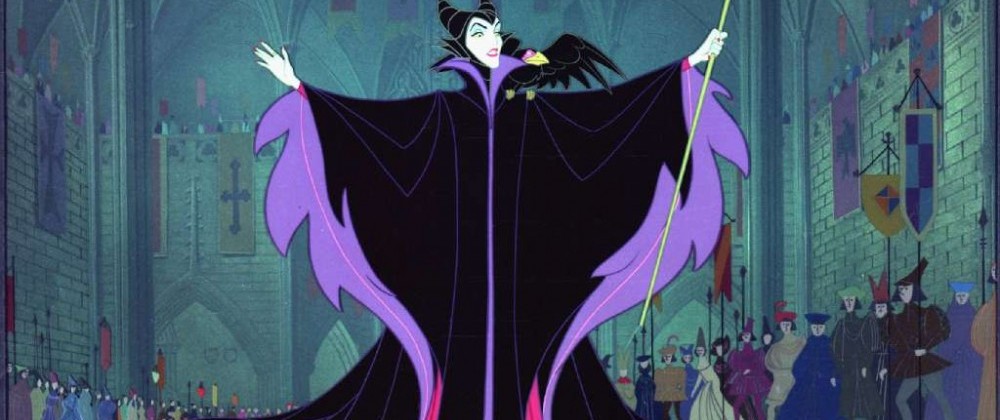
“There are movies that I saw as a child — and that were made for children — that still produce chills.” 1
- Clive Barker
“Disney movies are minefields of terror, and the animated cartoons, which will apparently be released and rereleased even unto the end of the world, are usually the worst offenders” 2 – Stephen King
“Fear is the natural province of horror; and horror is the worst case scenario of fear. When the worst case goes down, you’ve got a moment of horror, no matter what kind of film you’re watching.” 3
- John Skipp & Craig Spector
For many of us the name Disney is synonymous with family friendly viewing that can safely be enjoyed by children of all ages. One thinks back to the comforting pastel pink and blue highlights on the fairy castle in Sleeping Beauty (1958), or the vibrant colors that come alive when Alice is serenaded by an entire garden filled with flowers in Alice in Wonderland (1951) and we seem to be miles away from the minefield of terror that Stephen King would have us believe exists in these films.
Dig a little deeper, however, and there is a dark side that lurks behind this cheerful facade. David Bordwell points out that “despite being terrified by the witch, children were enchanted by the dwarfs.” 4 Even still, when most of us think of Snow White and the Seven Dwarfs (1937), we fondly recall the titular dwarfs, with names that immediately bring to mind their mannerisms, or the way that the princess is comforted by a ring of adorable woodland creatures that surround her after she narrowly escapes the death sentence decreed by her step-mother the Queen.
Wait just a second… a death sentence in a family film? Right, that bit where the woodcutter gives Snow White a last minute reprieve and she flees through the forest, terrified by trees that reach out with knotted branches that behave as if they were malicious, gnarled hands. I guess that’s what King means by minefield.
It’s strange how we tend to forget about the darkness that populates these family films. Maybe it’s because these horrific images that settle into our subconscious and seep into our nightmares exist somewhat separately from our memories of the films themselves. Sometimes perhaps, but not always. Roy Edward Disney, in the liner notes to the 2001 DVD edition of Snow White and the Seven Dwarfs reveals that he has “a ferociously strong memory of seeing the sequence of Snow White’s terrified run through the forest, with all of the trees grabbing at her clothing, in pencil test with temporary music.” 5 This clearly indicates that the experience is one that has stayed with him since childhood. As he puts it; “I was probably six, and I was scared witless.” 6 Stephen King, in his nonfiction examination of all aspects of the horror genre, is quick to point out that “what the good horror film (or horror sequence in what may be billed as a ‘comedy’ or an ‘animated cartoon’) does above all else is to knock the adult props out from under us and tumble us back down the slide into childhood.” 7 If we look into the fairy tale origins of these Disney films, one quickly realizes that many of these stories make use of moments of terror to generate tension. The animated adaptations stray considerably from the original fairy tales, sometimes simplifying the storylines, but often adding scenes that are much more suited to the screen. A good example of this is the way that the evil Queen’s demise in Snow White and the Seven Dwarfs becomes a spectacular chase sequence up a mountainside during a thunderstorm, rather than the traditional ending of her being forced to dance herself to death in iron shoes at the wedding of Snow White and Prince Charming. Similarly, Prince Philip’s battle with Maleficent at the conclusion of Sleeping Beauty is nowhere to be found in the Charles Perrault tale the film cites as its source material.
This is not to say that these films don’t connect back to their origins, because they do. They keep the framework of the original texts, and retain the basic mechanisms that make the stories work. Snow White and the Seven Dwarfs, for example, certainly does owe some of its dark moments to the Grimm’s fairy tale from which it was adapted, but we must also acknowledge the fact that some of the film’s most striking elements rely heavily on the creative decisions made by Walt Disney and his team of animators. Not all of these changes are as obvious as the ones mentioned earlier. Sometimes the contribution of the creative team is an easily overlooked detail.
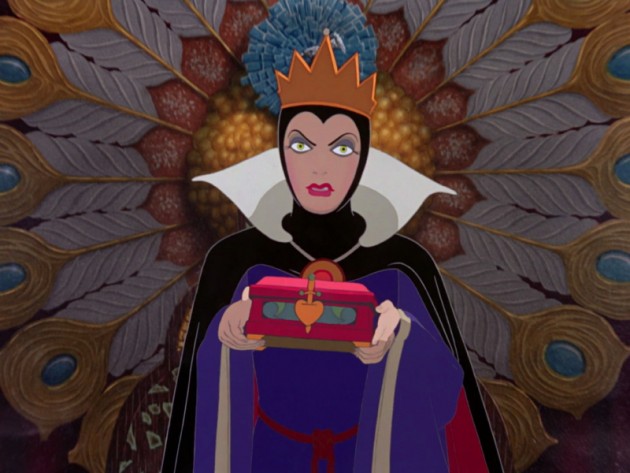
One such example is the imposing throne that the vicious Queen reclines upon while she savors her status as the ‘fairest in the land’ before finding out at that she has been deceived by the woodcutter. The motif that decorates the throne is an explosion of peacock feathers that radiate outward from the Queen’s head. This is a brilliant use of symbolism, as the peacock is a recognized symbol of vanity. The deep purple highlights in the feathers link with the purple highlights on her robe and this creates a powerful association which relates directly to the way that her narcissism drives the narrative of the film.
This all-consuming desire to be recognized as the most beautiful person in the land ultimately drives the Queen to bring her inner ugliness to the outside, as she transforms into an old crone during the latter half of the film. A sickly green hue is used to detail the black magic she uses to generate this disguise, as well as the creation of the poisoned apple which will carry Snow White into the sleeping death. Throughout this entire sequence, which reveals the Queen as the sorceress that the dwarfs suspect her to be, we see the terrified reaction of her raven familiar. This jet-black carrion bird, in a moment of darkly comic brilliance, hides inside a human skull and peeks through the vacant eye sockets to watch the Queen’s activities. This antic gives the grim impression that the piece of bone is being worn like a mask. Gallows humor, indeed.
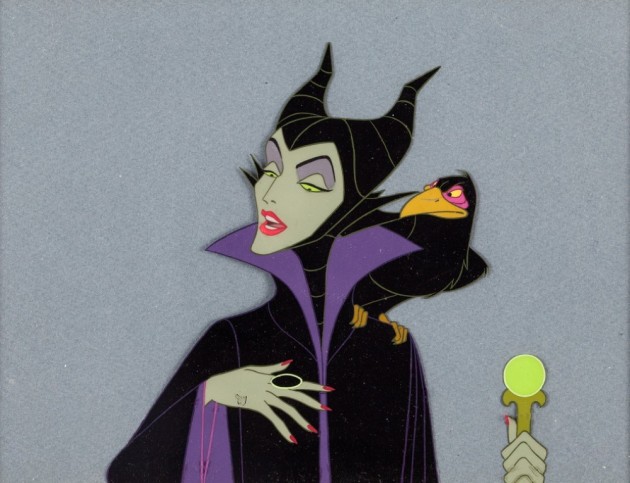
“Horror stories and fairy tales are united by a dark core. They construct fearful menacing worlds which we are drawn into as a way of exploring our own private terrors.” 8 The dark heart at the core of both Snow White and the Seven Dwarfs and Sleeping Beauty is that of a diabolical sorceress, and there are a number of similarities between the evil Queen of the former, and Maleficent in the latter. In both films the villainess is dressed in black, with highlights of bruise purple and hospital green, but in Sleeping Beauty she has been granted an even more imposing presence. Her eyes are bile yellow, her skin has a deathly bluish tint, and her head is adorned with a pair of spiraling horns.
Maleficent, like the evil Queen, keeps a raven as her familiar, but is far more open in her use of the dark arts. She enters the film in a burst of green fire when she arrives uninvited to a celebration in honor of the birth of Aurora. Her sarcastic demeanor immediately indicates that she, unlike the others attending the festivities, is not the bearer of good tidings. In addition, her stature and majestic appearance combine to mark her as visibly different from the comforting, grandmotherly appearance of three good fairies; Flora, Fauna and Merryweather.
These visual similarities point to the notion that, to some degree, Maleficent is a reflection of her counterpart in Snow White and the Seven Dwarfs. This aspect is played up in the way that her malicious schemes attempt to thwart the ‘true love conquers all’ expectation put in place by that earlier film. In fact, the scene where Maleficent explains the details of her fiendish plot parodies the traditional fairy tale ending by showing a grizzled and bearded Prince Philip coming to the rescue a century after Aurora’s slumber begins. Of course, things don’t go the way that Maleficent has planned, and after Philip escapes her clutches and battles his way through the thorns that have magically enshrouded the castle that houses his sleeping bride-to-be a final showdown between good and evil is the only logical climax.
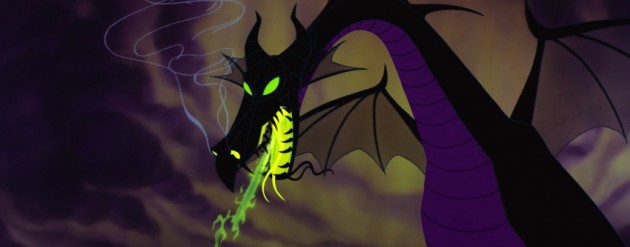
What isn’t logical is the shape that this climax takes, or more specifically, the shape that Maleficent assumes. In one of the most terrifyingly original animated sequences ever, the sorceress confronting the intrepid hero calls upon all the powers of Hell and suddenly transforms into an enormous dragon that towers over the brave prince. One of the most impressive aspects of the metamorphosis into the dragon is the way that the retention of the color motifs means that the character of Maleficent still has a tangible presence, despite the fact that her recognizable form has been changed completely. The sleek and streamlined silhouette of the dragon makes exceptional use of the widescreen space and has the same purple and black coloring as her feminine form. This incarnation also has the same bile-yellow eyes, and belches forth corrosive fire in the same bright green shade used to denote Maleficent’s use of sorcery earlier in the film.
Through these flaming discharges Maleficent is able to turn the forest of thorns into an impassable inferno while simultaneously disintegrating the stone bridge that supports Prince Philip. The sequence is the stuff of pure nightmare, and is one of the scenes that horror author and director Clive Barker cites when he discusses the frights that can be found on the children’s shelves at your local video store. 9 Ultimately good does triumph, but evil leaves an indelible mark on the psyche.
A final counterpoint to these two films is Disney’s adaptation of Alice in Wonderland. This was a project that Walt Disney had long desired to bring to the big screen, having done several shorter films like the Mickey Mouse short Thru the Mirror (1936) that borrowed elements from Lewis Carroll’s book. Alice in Wonderland may lack the scenes of outright horror that appear in Snow White and the Seven Dwarfs and Sleeping Beauty, but it makes up for it by bringing to life a bizarre world where one can never be sure what is threatening and what isn’t.
The most innocuous characters can sometimes be dangerous and cruel, such as the brightly colored flowers that serenade Alice and then just as suddenly ostracize her and accuse her of being a dreaded weed. On the other hand, sinister beings like the Cheshire Cat or the hookah smoking Caterpillar offer her helpful advice, although she must first decode the cryptic nature of their words in order to figure out just what they’ve told her to do.
The frightening aspect of the film is the way in which there really isn’t any logic in Wonderland. Much as King posits that horror sequences remove the supporting structure that adults come to rely on, the absence of logic in Alice in Wonderland tumbles adults down the rabbit hole back to childhood, and brings back the sense of powerlessness, confusion and discovery that we once had.
Despite Alice’s wishes to visit just such a place, when she gets there it turns into an experience that is more disconcerting than wonderful. In Snow White and the Seven Dwarfs and Sleeping Beauty we are treated to scenes of the princesses being comforted by the gentle woodland creatures. Aurora even sees them steal the clothes of the prince she met ‘Once Upon a Dream’ and dress up so as to console her when she feels isolated, but when Alice meets with a normal looking bird after growing enormously tall due to the effects of eating part of the mushroom that the Caterpillar suggested she is assaulted and accused of being a serpent on the prowl for eggs.
Alice, like the princesses in the other two tales, also encounters a vicious queen. The Queen of Hearts, however, is an impulsive and unpredictably violent despot who has more bark than bite. Throughout the film’s climax she is constantly shouting out for everyone to be beheaded for the most trivial of crimes, and even puts Alice on trial. What is most perhaps most curious about the Queen of Hearts is the vast difference between the way she looks, and the appearance of the villains in the other two films we have discussed.
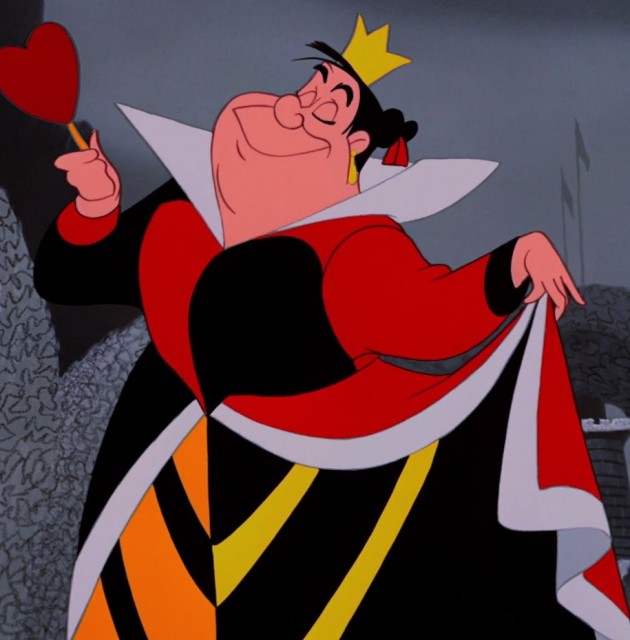
The short, squat woman bears no physical resemblance to the tall and slim beauties that so terrorize the princesses Snow White and Aurora. She appears to be a glutton driven by a similar desire for attention and perfection. Alice, Snow White and Aurora – as seemingly perfect as they are – have no such aspirations: they are simply kind and caring and sweet. We can identify with these characters, and we feel the perils they face. The scary moments may be slightly traumatic, but they have the effect of a parable. By clearly denoting right and wrong, they teach us to learn the difference between the two.
Lust is perhaps a bit too racy for family films, and maybe sloth isn’t quite cinematic enough, but by associating greed, vanity, gluttony, envy and vengeance with the horrific figures of our three queens these films instill in our minds an aversion to five of the seven deadly sins. Through wholesome entertainment Disney is able to scare some sense into those who may stray from the paths of virtue, and these moments of fear might also help us to rediscover the inner child that we once were.
“There I sat blubbering into my beard over a bunch of cartoon characters. But it wasn’t Disney that manipulated me; I did it myself. It was the kid inside who wept, surprised out of dormancy and into schmaltzy tears… but at least awake for a while.”
10
- Stephen King
Bibliography:
1 Barker, Clive and Peter Atkins. “Other Shelves, Other Shadows: A Conversation (An Interview with Clive Barker)” in Cut! Horror Writers on Horror Film. (New York: Berkley, 1992) p. 22
2 King, Stephen. Danse Macabre. (New York, Everest House, 1981) p. 105-106.
3 Skipp, John and Craig Spector. “Death’s Rich Pageantry” in Cut! Horror Writers on Horror Film. (New York: Berkley, 1992) p. 242.
4 Thompson, Kristin and David Bordwell. Film History: An Introduction 2nd Ed. (New York: McGraw-Hill, 2003) p. 236.
5 Snow White and the Seven Dwarfs (1938), Platinum Edition DVD (2001) cat# 22254
6 Snow White and the Seven Dwarfs (1938), Platinum Edition DVD (2001) cat# 22254
7 King, Stephen. Danse Macabre. (New York, Everest House, 1981) p. 106.
8 Barker, Clive and Stephen Jones. Clive Barker’s A-Z of Horror. (New York: Harper Prism, 1998). p. 85.
9 Barker, Clive and Peter Atkins. “Other Shelves, Other Shadows: A Conversation (An Interview with Clive Barker)” in Cut! Horror Writers on Horror Film. (New York: Berkley, 1992) p. 23
10 King, Stephen. Danse Macabre. (New York, Everest House, 1981) p. 110.
Notes
- Barker, Clive and Peter Atkins. “Other Shelves, Other Shadows: A Conversation (An Interview with Clive Barker)” in Cut! Horror Writers on Horror Film. (New York: Berkley, 1992) p. 22 ↩
- King, Stephen. Danse Macabre. (New York, Everest House, 1981) p. 105-106. ↩
- Skipp, John and Craig Spector. “Death’s Rich Pageantry” in Cut! Horror Writers on Horror Film. (New York: Berkley, 1992) p. 242. ↩
- Thompson, Kristin and David Bordwell. Film History: An Introduction 2nd Ed. (New York: McGraw-Hill, 2003) p. 236. ↩
- Snow White and the Seven Dwarfs (1938), Platinum Edition DVD (2001) cat# 22254. ↩
- Snow White and the Seven Dwarfs (1938), Platinum Edition DVD (2001) cat# 22254. ↩
- King, Stephen. Danse Macabre. (New York, Everest House, 1981) p. 106. ↩
- Barker, Clive and Stephen Jones. Clive Barker’s A-Z of Horror. (New York: Harper Prism, 1998). p. 85.. ↩
- Barker, Clive and Peter Atkins. “Other Shelves, Other Shadows: A Conversation (An Interview with Clive Barker)” in Cut! Horror Writers on Horror Film. (New York: Berkley, 1992) p. 23. ↩
- King, Stephen. Danse Macabre. (New York, Everest House, 1981) p. 110. ↩



